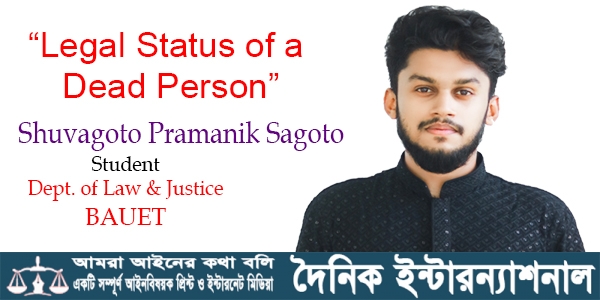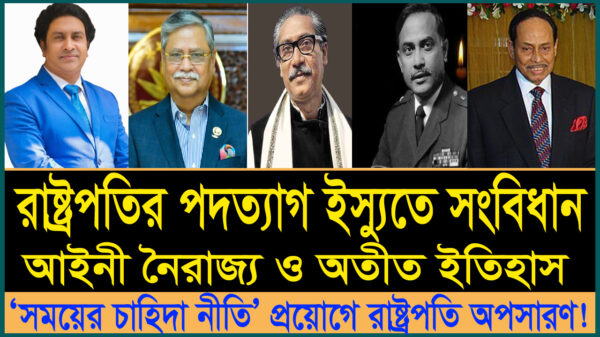শুক্রবার, ১৫ নভেম্বর ২০২৪, ১১:৫৭ পূর্বাহ্ন
Let’s go to visit the cultural capital in Kushtia

P.M. SERAJUL ISLAM (Seraj Pramanik):
Kushtia is the cultural capital of Bangladesh. Especially Kushtia is known for Shilaidaha Kuthibari, Lalon’s shrine, ancestral abode of Mir Mossarof Hossain, Kangal Horinath, Baga Jotin, Joladher Sen, Azizur Rahaman, Dr. Rada Binod paul, Gonga Kopota-Irrigation Plant, Bheramara Power Plant, the Islamic University, Medical College etc. The Shahi Mosque in Kushtia bears the sign of rich cultural heritage of the region from Mughal period. Kushtia is the origin of many historical figures.
Besides Baidyanathtala of Meherpur, the first capital of Bangladesh, Mujibnagar was established. The Jagati—Poradaha—Darsana route is the first broad-gauge railway line of the country. There are also government colleges, polytechnic institutes, paramedical colleges, nursing training institutes and technical training institutes. Kushtia is termed as the educational city of South Bengal.
In a word, the simple livelihood of the people and cultural atmosphere has made Kushtia different from other districts of Bangladesh. Most of the village people are weavers here. The looms sound like music. It is enjoyable for tourists. The rivers Padma, Gorai, Kaligonga and Mathabhanga have made this land fertile.
Kushtia municipality was established in 1937. This city has become one of the cleanest and comfortable cities of the country. There are many industries in and around the Kushtia city. The socio-economic advancement of the region is possible through making the municipality to a city corporation, Kushtia by pass road construction, natural gas pipelines, and EPZ construction. Recently Paragpur at the Daulatpur Upazilla of Kushtia district has been declared as a land port. It is hoped that this may develop into the biggest land-port in the country. Just as Mymensingh and Comilla divisions have been proposed, a Kushtia Divisions may be formed with Kushtia, Chuadanga, Meherpur, Jhenidaha, Magura and Rajbari districts.This will further develop Southern Bengal and advance the people of Kushtia.
Shilaidaha Kuthibar

One of Rabindranath Tagore’s dwellings, the Kuthibari, is located at Shilaidah in Kumarkhali Upazila of the Kushtia district. He lived here for part of his life, and wrote many memorable poems there. Tagore built the Kuthibari as his office/residence, to collect revenue as a Zaminder, from local peasants. The Kuthibari is now a museum, and is cared for by the Archaeological Department of Bangladesh.
Lalon’s shrine
The shrine of Lalon Fakir, the founder of the Baoul faith is located at Cheouria, about 2 km from the Kustia railway station. Lalon was a humanist who completely rejected all distinctions of caste and creed. He was also a fine poet and lyricist, whose songs are sung not only by his followers but also by non-Bauls. In 1963, a mausoleum and a research centre were built at the site of his akhra. Thousands of Bauls come to the akhra twice a year, Dol-Purnima, in the month of Falgun (February-March) and in October, on his death anniversary. During these three-day song melas, Bauls pay rich tributes to their spiritual leader.
Samrat Ekdil Shah
Tarun’s house is another historical place which is situated just beside of the tomb of Lalon Shah. Tarun’s father was a Sufi named Samrat Ekdil Shah. The majar of Ekdil Shah is another nice place. There is a high tower inside of a triangle island. From the top of the tower, you can see a triangle island named Haripur, which is covered with both of the rivers Padma and Goraih. It gives a view, which is unbelievable that you have not imagined before.
Islamic University
The largest university of Southern Bengal, the Islamic University is situated in Kushtia. It is a public varsity of Bangladesh. It is also a historical place. The campus of the university is well decorated, beautiful and green.

Mir Mosharraf Hossain
Mir Mosharraf Hossain was novelist, playwright and essayist, born at Lahiripara in the district of kushtia on 13 November 1847. you can see a school and a museum. It displays the furniture and essentials, which were in fact used by Mir Mosharraf and his family. The framed pictures, Mir Mosharraf related picture, Inkpot are there to be seen. Visitors will be captivated by the photos of Mir Mosharraf that were taken at museum.
Kangal Harinath
Kangal Harinath has written the first Bengali novel and is the pioneer of the rural newspaper of Bangladesh. He edited and published the periodical Grambarta Prokashika in the middle of 19th century. He was fearless to publish the truth. So, he was threatened by the administrators and Zaminders several times. To spread education among the women, he founded a girls’ school in Kumarkhali. The broken printing press at Kangal Kuthir, Kumarkhali is still announcing his memory.
Jaladhar Sen (Rai Bahadur)
(1860-1939) writer, journalist and traveler, was born on 13 March 1860 at Kumarkhali in the district of Nadia. His father, Haladhar Sen, was a local celebrity. Jaladhar Sen wrote more than forty books in a variety of genres: textbooks, biographies, children’s literature, translations, travelogues, novels and short stories.
Bagha Jatin (Jatindranath Mukherjee):
Bagha Jatin was a Bengali Indian revolutionary philosopher against British rule. His real name was Jatindranath Mukherjee. He was born on 8 December 1879 at his maternal uncles’ house at Koya in Kushtia. The ancestral house is still announcing his memory.
Azizur Rahman
Azizur Rahman (1917-1978) composer of songs and poet was born in a zamindar family on 18 January 1917 in the village of Haripur in Kushtia district. He lost his father while young and dropped out of school. While still a student, Azizur Rahman began composing songs. He became associated with the jatra, composing many songs for the stage. He also formed a jatra party and acted in them himself.
Dr. Radhabinod Pal:
Dr. Radhabinod Pal wsa an international justice, teacher, reformer, lawyer and Indian jurist. He was born at Salimpur in the district of Kushtia on 27 January 1886. He was just one of the 11 jurists of the International military tribunal set up after the 2nd word war, known as Tokyo trials, to punish the Japanese . The ancestral house is still announcing his memory.
Besides The Nobogroho Mondir and Khoksa kalibari Mondir (a temple) are another worthy place to visit.
There are two historical and beautiful mosques in Kushtia town. One is Shahi Mosque and the other one is the Baitul Jannat Mosque.
The one and only railway of Bangladesh which is directly connected with India goes over the Kushtia and it was the first railway of Bangladesh, built in Kushtia by the British government in 1860.
There are two historical and old industries in Kushtia. One is the Renwick & Jagneshwar Company (1896) and another is the Mohini Mills (1919). The internal area with the riverside of the Renwick & Jagneshwar Company is another beautiful area to see.
The municipality building of Kushtia is another historical place, which was built in 1886.

Quick Tips:
There are air-conditioned room facilities hotels of Kushtia. There are bungalows in Kumarkhali, Shilaidah and Kushtia. To stay in one of these bungalows, one will have to get permission from the Deputy Commissioner (D.C.) of Kushtia. Besides there are 20 Hotels with a guesthouse in which foreigners can stay because they are good. There are 20 very good restaurants to feed you at reasonable cost.
Best Way to Get Around:
Buses/coaches are available to Kushtia from the Gabtoli bus stand. There are also buses to Dhaka, the capital city of Bangladesh. Only 182 Kilometers distance from Dhaka to Kushtia.




























